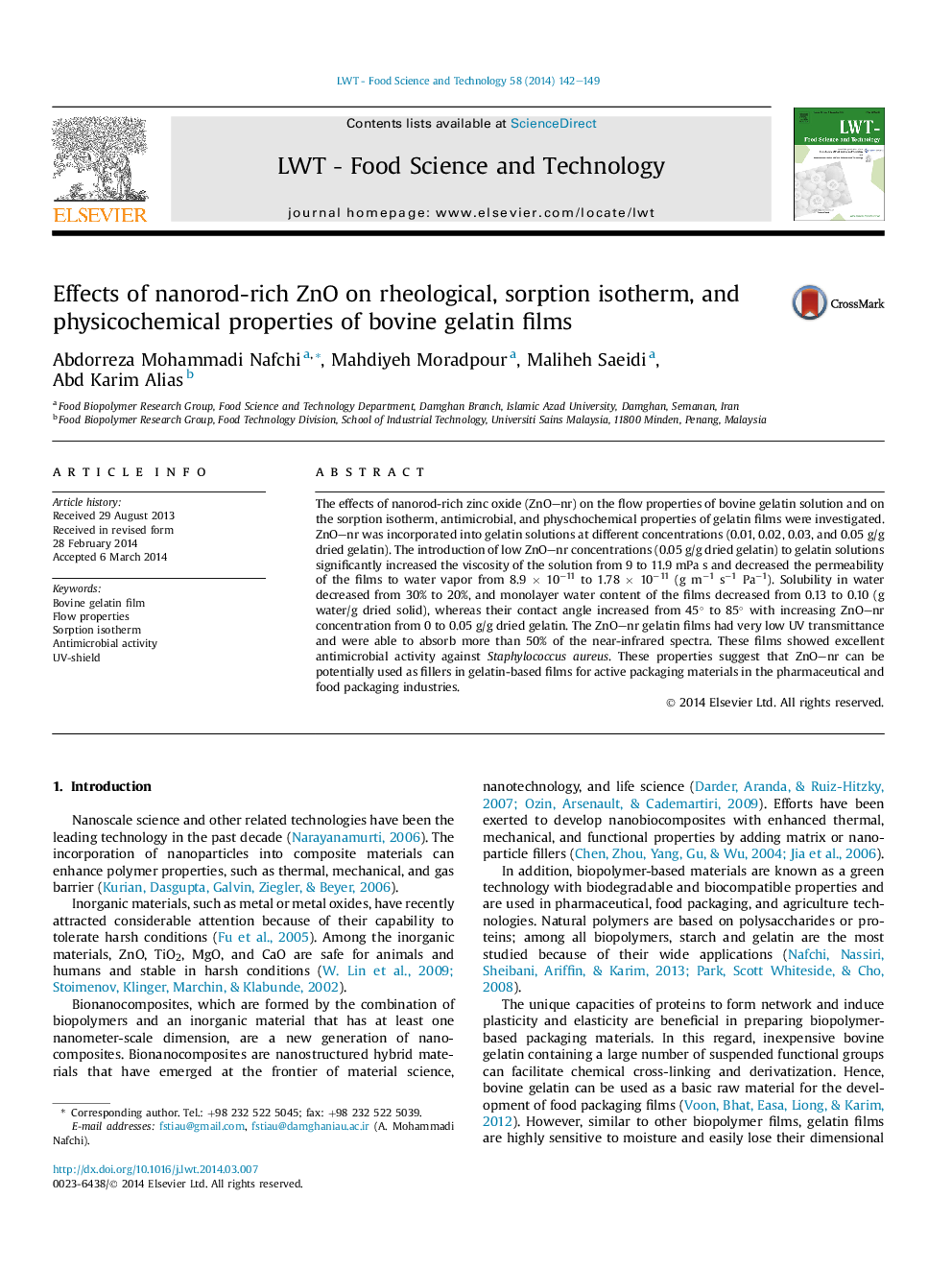| Article ID | Journal | Published Year | Pages | File Type |
|---|---|---|---|---|
| 6404054 | LWT - Food Science and Technology | 2014 | 8 Pages |
â¢Development of a new UV-shielded films based on nanorod zinc oxide and gelatin.â¢Nanorod zinc oxide increased viscosity of gelatin solutions.â¢5% of nanorod zinc oxide decreased permeability to water by one fifth.â¢Nanorod zinc oxide decreased hydrophobicity and moisture contents of gelatin films.
The effects of nanorod-rich zinc oxide (ZnO-nr) on the flow properties of bovine gelatin solution and on the sorption isotherm, antimicrobial, and physchochemical properties of gelatin films were investigated. ZnO-nr was incorporated into gelatin solutions at different concentrations (0.01, 0.02, 0.03, and 0.05 g/g dried gelatin). The introduction of low ZnO-nr concentrations (0.05 g/g dried gelatin) to gelatin solutions significantly increased the viscosity of the solution from 9 to 11.9 mPa s and decreased the permeability of the films to water vapor from 8.9 à 10â11 to 1.78 à 10â11 (g mâ1 sâ1 Paâ1). Solubility in water decreased from 30% to 20%, and monolayer water content of the films decreased from 0.13 to 0.10 (g water/g dried solid), whereas their contact angle increased from 45° to 85° with increasing ZnO-nr concentration from 0 to 0.05 g/g dried gelatin. The ZnO-nr gelatin films had very low UV transmittance and were able to absorb more than 50% of the near-infrared spectra. These films showed excellent antimicrobial activity against Staphylococcus aureus. These properties suggest that ZnO-nr can be potentially used as fillers in gelatin-based films for active packaging materials in the pharmaceutical and food packaging industries.
